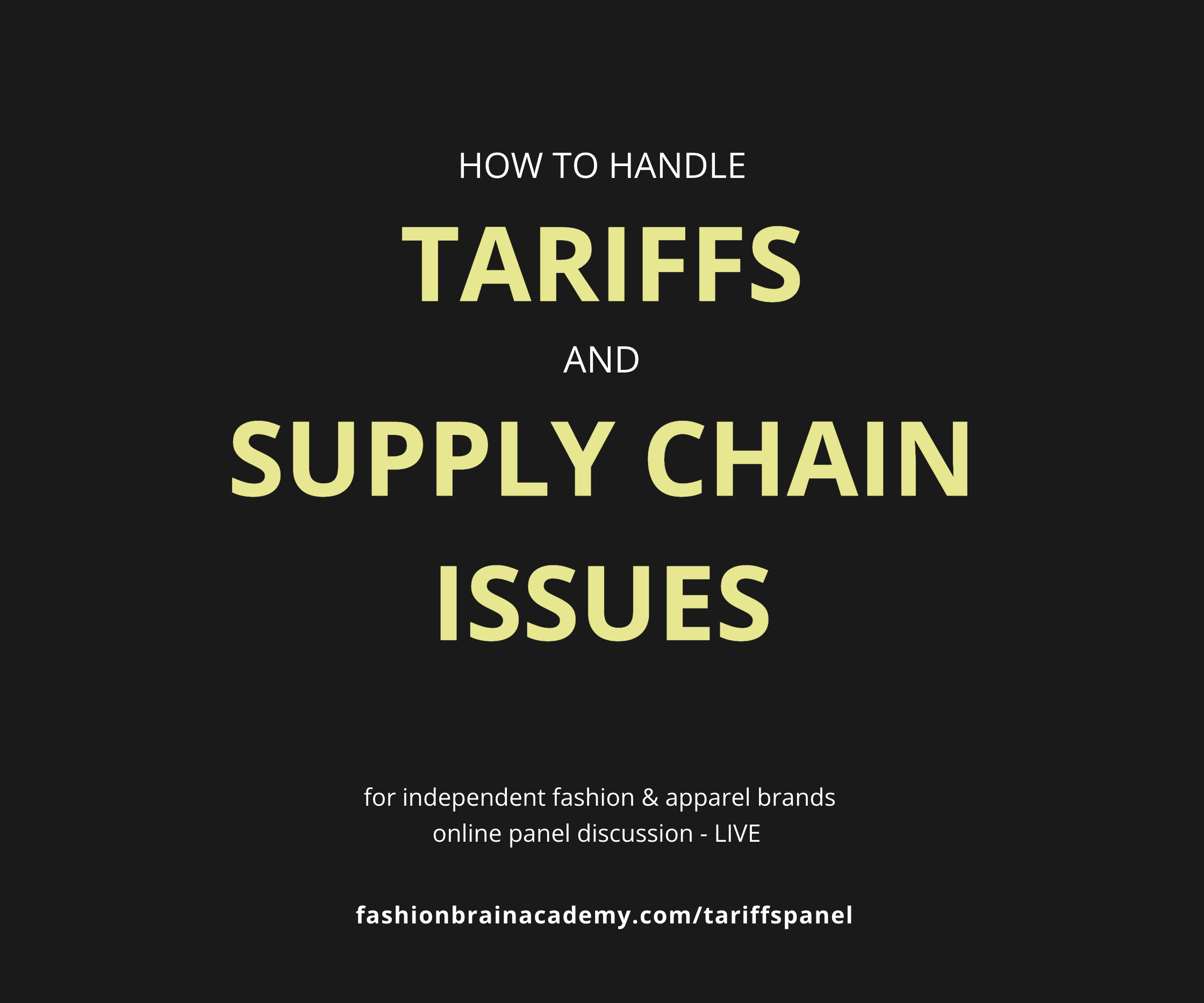 This is the 2nd article in a two part series. Click here for part one.
This is the 2nd article in a two part series. Click here for part one.
Before you can start to sell to buyers, it’s helpful to know what’s REALLY going on in their minds.
There are 2 important things you need to understand.
1) Retail buyers really just want to know 2 things about your line:
- How does it fit into my store?
- Can I make money from it?
You must be clear on these two points to get a shop’s attention. They care a lot less than we’d like to think about your line philosophy and your inspiration for the season’s styles. You want to focus on filling the stores’ needs rather than telling them about yourself and how great your line is. Sad but true.
Be sure you know who your line “hangs with” and why you feel it would sell in their particular store before you approach them.
2) Buyers already have objections to buying your line – even before they have any idea what you sell, have seen your pricing, or met you.
While this may not seem fair – how could they object to my product if they don’t even know what I sell yet? – it’s completely true.
It’s your job to identify the objections swirling in a buyer’s mind before they even tell you. Because, honestly, they’re NOT going to tell you. Instead, they just won’t give you an appointment or place an order and you won’t know why.
So here’s what you can do…
Ask yourself this question. What’s the internal dialogue going on in a buyer’s mind?
Buyers have pre-conceived ideas about emerging designers. I know this because I was an emerging designer AND I was a retail buyer. The 2 are NOT thinking the same thing!
Here’s what buyers are worried about with emerging designers:
- Poor quality – “most newbies think their line is better than it is…”
- Poor fit – “newbies do NOT spend enough time perfecting their fit then get defensive when I say anything about it…”
- Customer service – “new companies don’t have systems in place to respond to me when I have a problem or a question…”
- Standing behind their product – “if I have an issue, many emerging designers just don’t want to hear it or don’t believe what I’m saying – they’re so concerned about getting screwed by retailers…”
- Shipping on time – “if this is their first or 2nd season, they don’t have enough experience to guarantee I’ll actually GET what I ordered on time…”
- No track record – “emerging designers want me to take a chance on their line but I have no indication that they can actually ship a quality garment on time, that fits well, and will sell in my store. They want me to take all the risk but they’re not willing to accommodate my fear of losing money on their product…”
For all these reasons above, many retailers are not always willing to take a chance on a new collection. They’ve been burned before and they often feel it just isn’t worth the risk.
So how do you get an order if buyers are so risk-adverse?
- Understand their objections BEFORE you start selling
- Address these objections in your marketing and sales outreach
- Be flexible
I’ll use 2 specific case studies of designers I’m working with right now…
Designer A:
- Buyer objection: “You’re too new and we’re worried you cannot actually deliver what you promise.”
- Address the objection: “You may be hesitant to buy my line because it’s my first season. I would be too as I owned an online boutique for years. Just so you understand, I’m a seasoned online retailer (this designer ran an online vintage store before she started her collection). I know what it’s like to run a business, provide customer support, and ship a product out on time”.
- Be flexible: The designer could offer a small test order for the store to build trust. No minimum order and a promise to swap out anything that’s not selling in 30 days.
Designer B:
- Buyer objection: “You say you can deliver a quality product that actually fits a woman’s body but this is your first season so you probably can’t actually do it.”
- Address the objection: “It’s my first collection and you may be concerned about the quality and fit of my line. In my case, however, I am working with a production manager that has 20+ years of experience (Boaz David from humanb.com) and has worked with the factories I’m using for years. It’s not just me promising good quality – a newbie – I have a professional team behind me.
- Be flexible: “I assure you if there are any issues with quality or fit, you can call me directly and I’ll handle it personally. I want the line to sell in your store and I’m committed to working as your partner on that. I’m not going to sell it and forget it.”
Here’s your assignment to help you sell more to boutiques.
Make a list of all the reasons (objections) buyers may have to buying your collection. Do it now – just print this out and get started – while it’s on your mind:
1.
2.
3.
4.
5.
Now make a list of what you can say or do to address these concerns BEFORE you even hear it out of a buyer’s mouth (because they probably won’t say it but they’re definitely thinking it):
1.
2.
3.
4.
5.
Now look at what you’re doing with your buyer email/phone/mail outreach. What specific changes can you make to better appeal to buyers?
1.
2.
3.
4.
5.
So tell me this…
Is this article helpful to you? If so, please LIKE it and SHARE it with your friends
And also tell me this…
What’s your NEXT action step? What are you going to do NOW to sell more of your line? Let me know in the comments below.
Thanks for reading!
Jane
P.S. I teach the ENTIRE process of selling to boutiques in this online course. If you really want to get in to stores, take the course! It teaches you the script to use with a buyer, the “perfect email” for a buyer, and ways to get over your fear of self-promotion. Click here to check it out now.



2 Responses
So helpful, thanks so much for dropping these tremendously valuable gems on us new designers.
My pleasure! So glad it’s helpful.
Jane